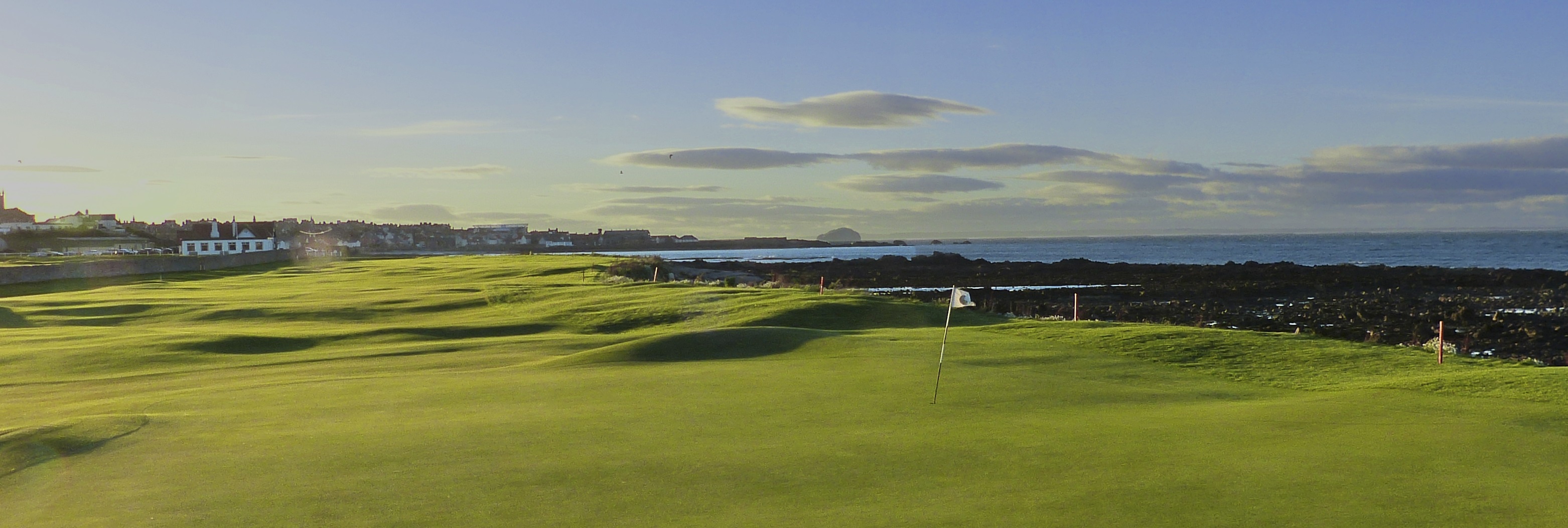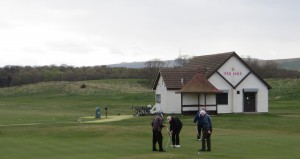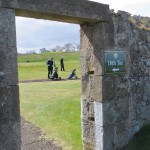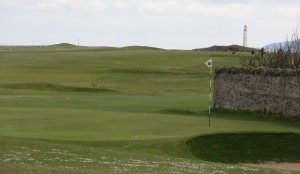
WANTED: Unpretentious links golf club for everyday play. World fame not required. Course should be engaging but not tricky, challenging but not brutal. Blind shots ok; water views a must. Some sunshine preferred. No extreme isolation, please.
There’s a question one of my most golf-obsessed friends likes to ask, in place of the usual “What’s your favorite golf course?” The question is, What golf course would you most like to have down the street from you?
It’s a better way of framing the issue. What course would you like to have available to you, day in and day out, for its mixture of reasonable challenge and quotidian pleasure? A place you won’t get tired of; a place that won’t beat you up; a place that offers a mix of holes that are easy and hard, ever-changing with the conditions, and never boring.
To the short list of golf courses that have found that elusive sweet spot for me – Kingston Heath, Baltray (County Louth), San Francisco Golf Club – I can now add the Dunbar Golf Club in East Lothian, a region aptly billing itself as Scotland’s Golf Coast.
From the old, new, and cosmopolitan city of Edinburgh, it’s about a forty-minute drive along the A1 to Dunbar, where the North Sea meets the Firth of Forth; this conjunction may be the cause of the town’s meteorological status as the sunniest place in Scotland – admittedly, a very different matter than being the sunniest place in, say, Tahiti.
 There has been golf in Dunbar (pronounced duhn-BAHR) since at least the early 1600s, and its Golf Club was formed in 1856. Old Tom Morris came down from St. Andrews to redesign the golf course in 1894, and the current layout is the work of James Braid and North Berwick’s Ben Sayers in 1922-24.
There has been golf in Dunbar (pronounced duhn-BAHR) since at least the early 1600s, and its Golf Club was formed in 1856. Old Tom Morris came down from St. Andrews to redesign the golf course in 1894, and the current layout is the work of James Braid and North Berwick’s Ben Sayers in 1922-24.
Dunbar is primarily an out-and-in design, the majority of its holes on the land between the sea and a long stone wall that was the original course’s boundary. After a three-hole inland loop, we pass through an opening in the wall to reach the fourth, which runs along the rocky beach. The short fifth turns away from the water, and the next five holes continue out from town before the course swings back along the coast.
The seventh and ninth were my favorite holes on the outward nine. The 382-yard seventh bends around a corner of the wall, and the green sits close to it with a guarding bunker in front. The ninth, a par-five, begins with a blind drive up to a plateau fairway, then plays down to a rumpled stretch approaching the green.
Water comes more into play on the inward half, with the excellent 12th hole extending over a rise to a putting surface perched at the northernmost point of the course. The seventeenth crosses two burns, one just ahead of the tee, another short of the green. The final tee is back on the inland side of the wall, a straightforward long par-four ending just steps from where the round began.
The simple clubhouse is slated for replacement by a new structure up the hill that will have workout facilities and a wider array of catering options. I hope it will somehow retain the warmth and charm of the bar room that welcomes visitors before and after their rounds.
In praising Dunbar’s everyday virtues, I do not mean to suggest it is not a serious golf course. It was one of the sites of Local Final Qualifying for the 2013 Open Championship – the last stage for those trying to get into the field, serious stuff indeed. It will always be overshadowed by Muirfield and North Berwick back up along the Golf Coast, those two being the prime pilgrimage destinations in the region. But Dunbar is, for those who love the true and ancient game, a delight not to be missed.

